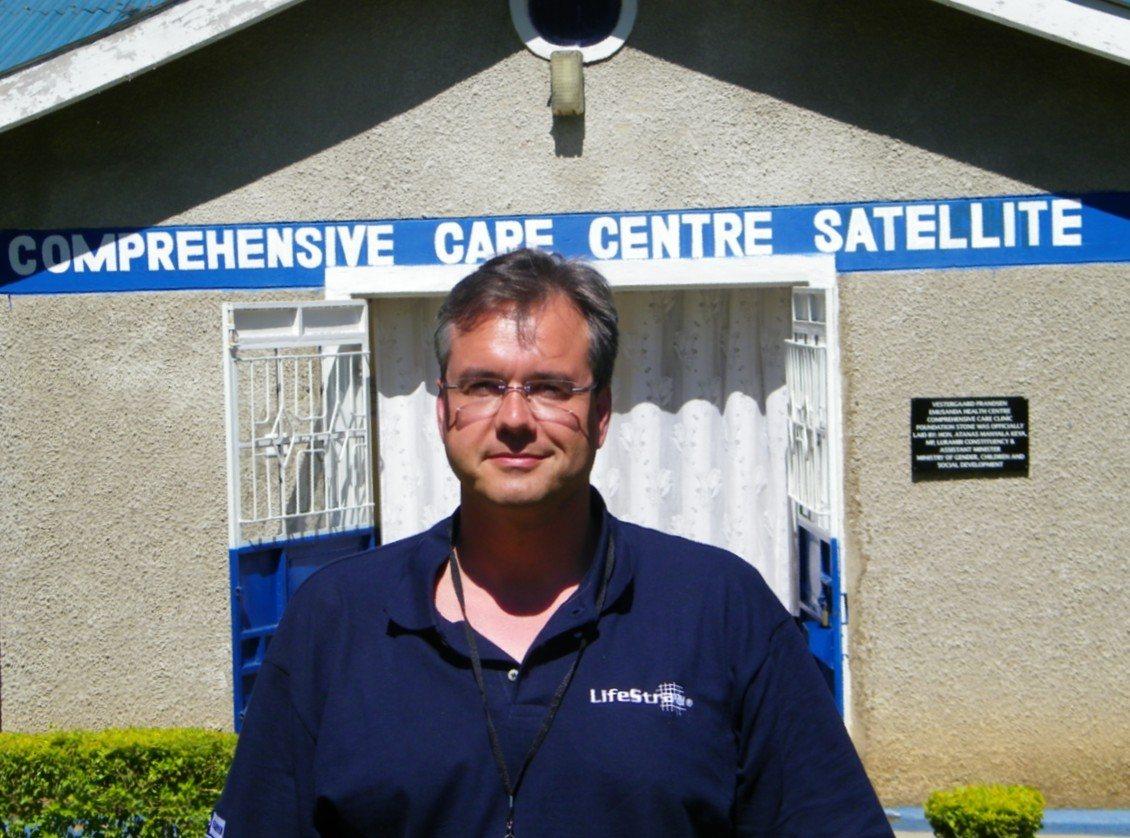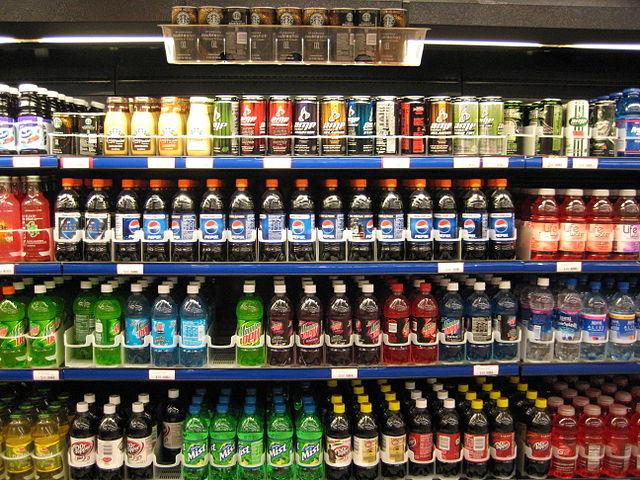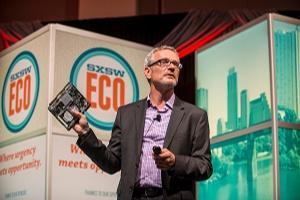How to Find the Perfect Carbon Offset


In other words, carbon offsets can provide your business with the flexibility to support more effective action than it could maintain individually. That all seems pretty simple, but in practice, it's not. There are literally hundreds of legitimate carbon offsets available, and more are emerging every day. Not all of them are a particularly effective match for an individual business, especially when it comes to branding.
The good news is: Carbon offsets have been around for a while, which means that there is a vast amount of research and guidance available to assist you with your purchase.
What is a carbon offset, anyway?
Simply put, a carbon offset enables you to buy into -- or take credit for -- an emissions-reducing project that is not directly connected to your property or business operations.
The goal is to neutralize part or all of your emissions. Depending on the project and your business operations, offsets could even result in a negative balance to your credit.
The World Resources Institute (WRI) defines a carbon offset as a:
...unit of carbon dioxide-equivalent (CO2e) that is reduced, avoided, or sequestered to compensate for emissions occurring elsewhere. These offset credits, measured in tons, are an alternative to direct reductions for meeting GHG targets in a cap-and-trade system.
The reference to cap-and-trade refers to a regulated, government-enforced market for carbon offsets. Since there is no such national system in the U.S., for the purposes of this article we'll be discussing voluntary offsets.
The voluntary market is nothing to sneeze at, by the way. A recent study by Imperial College of London revealed that voluntary carbon offsets can yield significant social and economic benefits above and beyond emissions reduction, making them an ideal fit for small businesses looking for opportunities to pitch in locally.
Finding the perfect carbon offset
Offsets can also provide you with a powerful tool for reinforcing your brand, or building up your community service profile. That's where things can start to get complicated.
The complexity becomes evident if you think of offsets in terms of the electric vehicle market. If you do business in an area where your only reliable access to charging is from a grid mix dominated by coal and natural gas, purchasing an EV for your vehicle fleet might impress some of your customers, but it is not the most effective use of your emissions-reducing dollars.
Now let's take another example directly concerning carbon offsets: For restaurant owners, offset projects that help reduce methane emissions from farm operations are an effective and meaningful place to invest offset dollars, especially if the project involves a local farm.
Biogas digesters, which reclaim renewable biogas and fertilizer from raw manure, are becoming common carbon offset investments for farm operations. So, in general, they are a natural fit for the food service business. However, that depends. If you run a vegan food truck and you want to offset your use of diesel fuel, purchasing carbon offsets to help install a biogas digester at a livestock or poultry farm would not be a particularly meaningful choice in terms of your business philosophy. Investing in an urban solar project for low-income housing might be a more appropriate offset.
Similarly, if you run a restaurant that advertises humane sourcing from local meat, dairy or poultry farms, investing in a biogas operation that reclaims manure from a local factory-style farm operation would not necessarily enhance your profile.
If you are having trouble finding a local fit, you may want to range farther afield. The clean cookstove movement, for example, combines economic and public health benefits in emerging economies that still predominantly rely on crude cooking equipment.
Carbon offsets and carbon crutches
Before we get to some resources for finding effective projects, it's also important to keep in mind that the entire commercial sustainability field is maturing rapidly, and consumer awareness is growing along with it. As a result, companies that engage in "greenwashing" are at greater risk of exposure than they might have been just a few years ago.
In terms of carbon offsets, the result is that regardless of how meaningful and effective your offset purchases are. If you haven't also taken meaningful steps to modify your internal operations, you could expose your business to criticisms like this [via the organization Business for Social Responsibility (BSR)]:
"...Critics argue that offsets do little to drive the internal business process innovations and systems-level changes needed. Moreover, some say, offsets may lead to complacency or 'absolve climate guilt,' in turn forestalling the necessary commitments to new behaviors, policies and business practices. Critics have likened corporate offsets to 'bargaining with the devil' and putting 'lipstick on a pig.'"
In addition to a negative impression on your customers, using carbon offsets exclusively as a crutch could also lead to a backlash in your supply chain, and it could impede your ability to attract a top-quality workforce.
The supply chain itself can also work against your efforts, depending on your type of business. Take Lego Group's foray into wind power, for example. The company helped to spearhead the Windmade label and is a major investor in a new offshore wind farm.
Lego's problem is that it has a long supply chain, so reducing emissions for its flagship facility has a relatively small impact on the overall carbon footprint of LEGO products. That also presents an obstacle in terms of future growth in emerging markets such as Asia. To address the issue, last year Lego launched a major supply chain carbon emissions initiative in partnership with the World Wildlife Fund's Climate Savers program.
As for the consumer side, just last week Lego announced that it would cut its decades-long relationship with Royal Dutch Shell for Shell-themed playsets when the current contract expires in 2016. The decision came after Greenpeace and other environmental stakeholders raised public awareness over the disconnect between Lego's climate action and Shell's business operations.
The bottom line is that the perfect carbon offset for your business will complement your goals and operations; it will complement other steps that you are taking internally to reduce the carbon footprint of your business, and where applicable it will also be supported by efforts along your supply chain.
Reinventing the carbon offset wheel (not)
Determining the type of offset that matches your business principles is actually the easier part of the equation. More daunting is the process of finding an offset that really delivers what it promises.
Both WRI and BSR offer up a concrete list of guidelines for purchasing carbon offsets. Among other things, you want to ensure that: the reduction would not have occurred in the normal course of business operations without the help of your investment; the amount of reduction is measurable and verifiable by accepted methodologies; the savings is permanent and not likely to be reversed; and there is a legal platform for providing you with recourse if the offset provider fails to see the project through to completion or otherwise falls down on the job.
You will also need to be on the alert for scams, including unscrupulous offset providers who oversell offsets to multiple purchasers for the same project.
This all can involve considerable time and expense, both of which are not as available to smaller businesses as they are to larger ones.
That's where carbon offset brokers like TerraPass come in. The burden of vetting providers and projects is taken off your shoulders, so you can focus on choosing the right fit for you and your business.
Image credit: Emilian Robert Vicol, Flickr cc
Vestergaard’s Success Secret: Its Culture


Editor’s Note: Triple Pundit’s RP Siegel visited Kenya to learn more about the LifeStraw Follow the Liters campaign. This is the third post from his trip. Read the first and second pieces here and here. Travel expenses were covered by Vestergaard.
In 2008, Mikkel Vestergaard had an idea. Based on results obtained in collaboration with the Carter Center, which enjoyed significant success in addressing multiple diseases at once (such as distributing bed nets along with measles vaccines), he decided to try an experiment to help address the HIV epidemic that was sweeping across Africa.
One of the biggest problems was the unwillingness of people to get tested. But if people did not know they were positive, they would have no reason to change their behavior. What Vestergaard did was to develop a CarePack consisting of a long-lasting treated bed net, as protection against malaria, a LifeStraw filter to protect against water-borne diseases, and 60 condoms as well some educational material. He then organized a campaign, in which people would be given these CarePacks at no charge, if and when they came in to be tested for HIV.
The campaign was a phenomenal success. In one week’s time, 47,000 people came in for testing. That represented more than 80 percent of the target population of sexually active adults in the area. That was the good news. The bad news was that the number of people identified as positives overwhelmed the health care capacity of the Provincial General Hospital. Unwilling to allow the project to end in failure, Vestergaard worked with the Ministry of Health to construct the Emusanda Health Centre, which was built on a piece of land donated by a local farmer, Matthew Olumatate, who had lost two sons to malaria. The clinic has helped to handle the excess ever since.
Emusanda provides HIV treatment and counseling services as well as maternal and child health care and a lab. It was clear from my visit there that this facility plays a vital role in the life and health of this community.
So, what is it that makes this exceptional company tick, and what is responsible for its tremendous success in humanitarian entrepreneurship?
I’ve already described the tremendous level of innovation that the company has brought to bear -- not only in its products, but also in its business models and distribution methods. This has allowed the company to make effective, large-scale distributions of life-saving technology to millions of people in need, at no charge to them.
But there is another element at play here which, I think, elevates this company beyond most others. That is its culture. Its culture is expressed in the way that this group of mostly young people is so committed, so empowered and so passionate about the work they do that they view every day on the job with a sense of adventure.
How does that happen? It’s in the DNA of the company -- its willingness to accept a return on investment that might be measured in learning rather than earning. It helps that the company doesn’t have stockholders to report to on a quarterly basis. But the fact is that Vestergaard brought the entire company over to Kenya, some 80 people (roughly half their size today), to participate in the CarePack campaign. That’s because Mikkel, who told me that “we’ve never had to choose between doing good and doing well,” wanted all of them to experience firsthand exactly what this company was all about.
Mikkel told me that, “Companies that don’t understand that they have a bigger responsibility out there, I doubt that they’ll be around 20 years from now.”
On Friday evening, a group of a hundred Vestergaard employees, volunteers and others closely involved with the Follow the Liters campaign gathered at the Golf Hotel in Kakamega for what has become a campaign ritual. Many of these folks had been up all week long at 5 a.m. to head out to schools, hours away over horrible roads, only to return in the evening to attend meetings that sometimes ran until midnight. Still, they were up dancing into the wee hours to the sounds of African, European and American music. Next week they will get up and do it all again, and 301 schools later, the Follow the Liters campaign will be complete.
Image credit RP Siegel
RP Siegel, PE, is an author, inventor and consultant. He has written for numerous publications ranging from Huffington Post to Mechanical Engineering. He and Roger Saillant co-wrote the successful eco-thriller Vapor Trails. RP, who is a regular contributor to Triple Pundit and Justmeans, sees it as his mission to help articulate and clarify the problems and challenges confronting our planet at this time, as well as the steadily emerging list of proposed solutions. His uniquely combined engineering and humanities background help to bring both global perspective and analytical detail to bear on the questions at hand.
Follow RP Siegel on Twitter.
Berkeley Takes on the Sugary Drink Industry


Berkeley, California has been called the epicenter of many things. In the 1960s, it played a pivotal role in the anti-war movement, the counter-culture movement and the free speech movement. And as Robert Reich, University of California, Berkeley Chancellor’s Professor of Public Policy, recently pointed out in his blog, the area may soon have one more attribute to add to its fame: the first city to tax sugary drinks.
If this doesn’t seem like much of an accolade, consider New York. The indefatigable ex-mayor Michael Bloomberg tried to push through a ban on sugary drinks a few years back and was soundly rebuffed by the courts for executive overreach. The credit for that failure was attributed to the soda industry, which lodged a vigorous campaign to stop the restriction and has been equally focused on dispelling criticisms of the sugar industry.
But just because New York is big, populous and has lots of lobbyists and good lawyers, doesn’t mean the fight is over concerning food regulation and sugar, apparently. After all, if our national neighbor to the south can push through a soda tax, well, why not a little American city with a world-famous research center?
That’s right. Americans aren’t the first (nor will likely be the last) to wrestle with the question of whether to regulate sugar consumption.
And to get an appreciation of just how momentous Mexico’s coup d’etat was when it came to finally taxing soda sales earlier this year, it’s important to consider the role that soda has historically played in Latin America’s rural villages. When I was a child living and traveling in Mexico, soda drinks were considered the “safe” everyday beverages to turn to. Soda filled an essential role in small villages and even large city apartment complexes where tap water was either untreated or often difficult to access. Consequently, the soda industry has had decades of unfettered access to school-aged consumers, many of whom likely didn’t have potable water at home or relied on bottled soda drinks for hot-weather liquids.
And in time, Coca-Cola took on folk-hero status, as a means for curing dysentery, settling a queasy stomach and even curing headaches. To the school-aged child and the newly-arrived tourist, drinks like Coca-Cola, Pepsi and even Fanta filled multiple niches and ‘cures’ during hot summer months.
So, Mexico’s new tax has soda companies understandably worried. After less than a year in force, soda sales have already begun to drop in Mexico, giving further proof the old adage that if you tax something and make it less convenient to rely upon, consumption will indeed wane.
Still, passing a measure to tax the sale of one of America’s biggest and dearest industries can still be a hard sell. For those who grew up with Pepsi in the fridge, it may well seem like taxing something quintessentially American like apple pie or turkey dinners.
That’s why in this education- and research-oriented city, the sell doesn’t just come with good graphics, a well laid-out FAQ page and an appealing Berkeley vs. Big soda poster contest, but with hard core, difficult-to-argue facts that would capture the insatiable attention of most Berkeley researchers: a scientific abstract published on PubMed showing the clinical effects of sugar-sweetened drinks on the human metabolism. Dry, but definitely campaign-effective.
Will Berkeley be the first to tax? Who knows. But either way, the debate over the effects of sugary drinks isn’t likely to die. California is already mulling over warning labels about sugary drinks, and San Francisco is discussing a tax measure on sugary drinks as well.
Like a lot of things that lived in fable and fame from previous generations, sugar-sweetened sodas, now outed for the health problems they are believed to have caused, may one day soon have earned a status similar to cigarettes: loved and appreciated, but no longer cool.
Image of sodas: Marlith
Why Sustainability is Integral to Enterprise Risk Management


Enterprise risk management (ERM) has long been a growing priority of corporate executives and boards — not a surprise since political, economic and social change can occur quickly. But a study issued by the business reporting firm Workiva suggests sustainability-related risks should be part of a company’s core ERM analysis. Climate is an obvious reason, as many businesses learned after Hurricane Sandy two years ago. But other factors, from supply chain management to confronting water scarcity, are behind why the study’s authors insist businesses need to take sustainability seriously if they are to remain viable for the long term.
Sustainability is more than highlighting environmental and social risks, however. The Workiva report insists that in order for sustainability to be part and parcel of a company’s risk management plan, buy-in has got to start at the top, board- and executive-level, with a solid corporate governance structure. And before those groans start coming out of the boardroom, it’s important to remember that many reports already out there prove that a company focused on being sustainable and socially responsible is one that also enjoys an improved financial performance.
But how should sustainability-related challenges be implemented and monitored?
A study conducted earlier this year by the Investor Responsibility Research Center (IRRC) and the Sustainable Investments Institute revealed that two-thirds of large companies who monitor sustainability at the board level do so via the public affairs or governance committees. But a successful integration of sustainability and ERM would be more likely to occur if such responsibilities were tasked to an audit or risk committee—yet only 11 percent of large companies (as in those ranked by Standard & Poor’s) do so. It is these senior managers who are best tasked with the daily monitoring of sustainability performance can set goals and key performance indicators, whether they are related to water, carbon or social responsibility within a supply chain.
Naturally, any plan to enmesh sustainability awareness throughout a company’s structure will require the breakdown of silos. While chief financial officers are focused on numbers, procurement on the supply chain and sales on product reliability, all departments have got to focus on how sustainability affects their day-to-day performance. Some companies have succeeded with this “all hands on deck” approach, such as Microsoft, which involved all departments when the company declared it would become carbon neutral two years ago.
Above all, a robust risk management strategy incorporating sustainability is about more than being compliant. Knowing how sustainability can affect a company’s prospects can become an effective management tool. Insurance companies, for example, can develop new products related to climate change. Bottling companies such as PepsiCo can save money and improve their brand reputation by assessing water risks. And Unilever’s assessment of its supply chain correlates with its improved sales in recent years. Knowing your risks is about more than protecting your company; understanding threats can also lead to new business opportunities...
Image credit: Wikipedia (Hybirdd)
After a year in the Middle East and Latin America, Leon Kaye is based in California again. Follow him on Instagram and Twitter. Other thoughts of his are on his site, greengopost.com.
California Organic Dairy Farmers Hit Hard By Drought


It’s easy to see the impact of the three-year-long California drought in residential areas anywhere in the state. Just look for brown lawns or green lawns with patches of brown. Or drive through parts of the San Joaquin Valley and see idled farmland. It’s harder to see with the naked eye the effects of the drought on the dairy industry in general and the organic dairy industry specifically. But report after report by various media outlets reveals that organic dairy farmers are being hit very hard in the Golden State.
California is the state with the most organic dairy cows, and it gained that spot in just a few years. California had less than 100 organic dairy farms in 2008, according to the Agricultural Marketing Resource Center. By 2011, the state had 57,809 certified organic dairy cows, making it the state with the highest amount of them. California is clearly an important state for organic dairy production. And the lack of rainfall in the state means it’s hard for organic dairy farmers to keep grasses green.
The U.S. Department of Agriculture (USDA) requires that organic dairy farmers put their cows out to pasture for the entire grazing season, or no less than 120 days. The cows must receive at least 30 percent of their feed from pasture. Back in January, California organic dairy farmers received a temporary reprieve from the pasture requirements for February and March. The USDA issued a temporary variance from the regulations for 53 out of 58 California counties designated as “primary natural disaster areas” due to the drought. The USDA stated that it will “reassess this temporary variance as the year progresses to determine whether further action is to be taken due to drought conditions.”
Despite the temporary reprieve earlier this year, organic dairy farmers in California are still hurting. Albert Strauss is a Petaluma-based organic dairy producer and owns Strauss Family Creamery. He told the Los Angeles Times he has “no irrigation and our reservoirs are dry.” The 500 acres his dairy cows roam are brown. “We've already depleted all last year's crops,” he said. He is not sure how he will be able to “go another year beyond this.” Multiply his plight across the organic dairy industry in California, and you get the true picture. These are desperate and hard times for California organic dairy farmers.
The entire California agriculture industry is hurting, as a study from the University of California, Davis Center for Watershed Sciences shows. Released in July, the study found that the total statewide economic cost of the 2014 drought is $2.2 billion. The drought is the third most severe on record and is responsible for California agriculture’s greatest water loss. River water loss for Central San Joaquin Valley farms has decreased by roughly one-third.
Farmers are making up for the loss of river water through groundwater pumping, which the study expects to replace most river water losses. However, the cost of groundwater pumping is high. The study puts it at $1.5 billion, or 3 percent of the state’s total agricultural value. If the drought continues for two more years, farmers will continue to use groundwater pumping. Pumping ability will decrease slowly while the costs of groundwater pumping increase.
Image credit: cheeseslave
Is Jessica Alba’s Diaper Company ‘Honest’ About Its Eco-Credentials?


The Honest Company, a line of eco-friendly baby, personal care and cleaning products dreamed up by Jessica Alba, has become wildly popular among parents looking for an alternative to Pampers and Johnson & Johnson. But, in a marketplace overcrowded with questionable celebrity products – from Suzanne Somer’s ThighMaster to Jessica Simpson’s line of edible cosmetics – is it any wonder a conscious consumer would approach a company created by a Hollywood actress with a heavy dose of skepticism?
To find out if the Honest Company is serious about sustainability, a good place to start is its origin story. Alba said the idea to create her own baby product line came to her when she was pregnant with her first child: Alba’s mother recommended a laundry detergent specially formulated for babies that she had used during Alba’s own childhood, Alba said in an interview with the Thomas Reuters Foundation. But when the “Sin City” actress used the detergent, she broke out into a rash – which motivated her to investigate the health effects of chemicals in everyday consumer products.
After reading “Healthy Child Healthy World” as part of her personal research, Alba approached the book’s author Christopher Gavigan and, as she told Fast Company, “…I hounded him for a year. I said, ‘I appreciate you’ve given me a handbook, but you haven’t given me a solution. Let’s make a solution.’” And they did: In 2012, Alba and Gavigan, the former CEO of nonprofit Healthy Child Healthy World, launched the Honest Company with nontoxic products ranging from diapers and baby wipes to (yes) laundry detergent and floor cleaner.
Alba’s personal passion for healthier products and her collaboration with environmental health leader Gavigan make a compelling case for the legitimacy of the Honest Company – as do the products themselves. On its website, the Santa Monica, California-based startup explained its approach to designing products and avoiding problematic chemicals and additives: While most companies will only consider an ingredient as toxic if it has immediate health impacts, Honest “takes a full consideration of potential chronic (long-term) impacts, exposure routes, unique windows of vulnerability and a wide spectrum of potential health impacts including carcinogenicity, teratogenicity, allergenicity, neurotoxicity and more.” The company stays up-to-date on the latest science in the toxicology field and is constantly adding new ingredients to its list of “toxic offenders” like phthatates and parabens.
The Honest Company may focus on environmental health and toxicity, but the startup also strives for broader environmental and social responsibility in its products and business operations, according to its website. Honest avoids petroleum-based products whenever possible (Honest diapers are made from a blend of corn and wheat), uses post-consumer plastic in its plastic packaging and is a certified B Corporation.
But, more importantly, the company appears to try to live up to its name – recognizing it can never be perfect (though it may aim for the eco-ideal), but offering customers full transparency (yes, honesty) about its products and operations.
And the company’s philosophy of openness and the quality of its products have clearly struck a chord with consumers: Honest is well on its way to tripling its revenues to $150 million this year, according to Upstart Business Journal. The startup also owes its success to its convenience and affordability (Honest keeps prices accessible by offering a home-delivery subscription service), as well as the stylish design of its products, especially its fun diaper prints (Honest may have taken a lesson from Method that green doesn’t have to mean drab and boring).
What’s next for the Honest Company? The startup is looking to expand into skin care and beauty product lines, according to Fast Company, and raised $70 million of venture capital funding this summer, Upstart Business Journal reported. But, as buzz about an IPO heightens, Brian Lee, another company co-founder, told VatorNews that Honest Company won’t sell to a larger corporation – because then it couldn’t stay true to its principles of making healthy, safe products.
"There are so many companies out there start with the right intentions," Lee said. "They say, 'I'm gonna make a car that's better for you,' or whatever, and they sell out. They sell out very early. They haven't made that impact and will sell to a large CPG [consumer packaged goods] company. The first thing that these companies do is they change the formulations on the products. So you haven’t achieved anything. You might have put some bucks in your pocket, but you haven't changed anything. And we started with the idea that we wanted to make that change."
Image credit: Flickr/TechCrunch
Passionate about both writing and sustainability, Alexis Petru is freelance journalist based in the San Francisco Bay Area whose work has appeared on Earth911, Huffington Post and Patch.com. Prior to working as a writer, she coordinated environmental programs for Bay Area cities and counties. Connect with Alexis on Twitter at @alexispetru
Procter & Gamble to Boost Conservation in Water-Stressed Areas


Procter & Gamble, commonly known as P&G, expanded its sustainability goals to include water conservation and sustainable packaging. P&G expects its manufacturing facilities to reduce water use by an added 20 percent per unit of production, with a focus on water conservation initiatives at facilities in water-stressed areas. P&G has four locations in California, a state experiencing its third straight year of drought. The drought is one of the worst on record.
Additionally, the company is on track to meet its goal to reduce packaging by 20 percent per unit of production by 2020. P&G has reduced its packaging by 4.5 percent percent per consumer use since 2010, according to its 2013 Sustainability Report. This progress has spurred the company to add more packaging goals. One of those goals is doubling the use of recycled resin in plastic packaging. The other is ensuring that 90 percent of its product packaging is recyclable or programs are in place to create the ability to recycle it.
The packaging redesigns for several P&G products shows has the company is working to reduce packaging. The redesigned packaging for Gillette Venus and Olay razors includes recycled plastic and is recyclable. It uses 26 percent less plastic in the manufacturing process. The packages are packed more densely in distribution which decreases carbon emissions during transportation. The Gillette blades and razors category switched its North America club packaging from plastic thermoform clamshells to a paperboard carton, which reduced 164,000 kilograms of packing material a year. The new carton also makes the product over 50 percent more efficient to ship and saves over $1 million in annual costs.
P&G is committed to water conservation
P&G sets water reduction reduction targets for each of its business units. Its 2013 Sustainability Report lists ways that the company invests in water conservation which range from working with suppliers to investigate breakthrough water recycling technologies to building new sites with water efficient technologies. Its plants are reducing water usage. One example is its Oxnard, California plant which reduced water use by almost 25 percent, resulting in an annual cost savings of over $900,000. P&G also educates consumers on ways they can reduce water use. One way consumers can reduce their water use is through the use of Downy Single Rinse. In one rinse it can provide the same amount of rinsing that a traditional three rinse process uses.
Beyond water conservation and packaging reduction
In addition to water conservation and packaging reduction, P&G has committed to other environmental goals. One of those goals is building for LEED certification for all new construction, including manufacturing plants, distribution centers and office buildings. Its Taicang Plant in China, opened in December 2012, is the first P&G site to achieve both LEED Gold certifications for administration buildings and Silver for manufacturing buildings. It is also first P&G site to use 100 percent wind electricity.
P&G has committed to reducing truck transportation by 20 percent per unit of production by 2020. Its distribution center in Colón, Panama reinvented the way it shipped by collapsing smaller product categories into common shipments and combining inventories of two or more countries. That new approach reduced lead times by 40 percent, lowered inventory by 11 percent, decreased containers in transit by 580, and reduced carbon emissions by 5.906 metric tons.
Image credit: P&G
Knorr cooks up support for World Food Day


Tomorrow on World Food Day (16th October 2014), stock cube brand Knorr is partnering with the United Nations World Food Programme (WFP) rallying people globally to pledge their support for building a world with zero hunger at www.wfp.org/pledge.
The Unilever kitchen stalwart will also support WFP’s ‘Home Grown School Meals Programme’ and provide one million nutritious, cooked meals for school children in Kenya, Indonesia and the Philippines.
According to the brand, around one in nine people in the world—many of them children—do not receive enough food and nutrition to lead a healthy life. Along with providing the right nutrition, WFP school meals act as a powerful incentive to get more of the 58m children who don’t attend lessons into school.
Paul Polman, Unilever ceo, commented: "Enhancing livelihoods and improving our positive social impact are key elements of our Sustainable Living Plan; and this includes our responsibility to addressing global issues such as food security and poverty alleviation. Knorr’s partnership with the World Food Programme on World Food Day is an initiative that will help us drive positive long-term change and give children access to the nutritious food that can help them reach their full potential in life.”
San Francisco Law: Airbnb Wins, Vacation Rentals Lose


Airbnb has finally gotten a break. After years of increasing scrutiny by cities like New York -- which has contended that the sharing economy business has, in some cases, been operating illegally within the metropolitan area -- Airbnb can finally chalk one up on its side.
The coup may not help its legal woes in New York, but it’s bound to make San Francisco home-sharing advocates a bit happier. On Oct. 7, the San Francisco Board of Supervisors voted to legalize home rentals of 30 days or less for the city’s permanent residents.
Residents were previously restricted from renting out their homes for periods of less than 30 days, according to a law that the city said protected housing rates and helped to regulate property rentals. The new law allows residents who live in the city for a minimum of nine months of the year to rent out rooms or residences for short stays for up to 90 days of business per year.
Sharing economy advocates fought hard for the change, arguing that the rentals helped cash-strapped homeowners make their mortgages. As of next February, residents who register with the city, agree to pay hotel tax on their rentals and carry a minimum of $500,000 liability insurance can now legally rent out their digs.
It’s yet to be seen how much profit the landlords will have left over to apply to their costs once they're done paying the extra taxes and insurance. Or what those codicils will do to the rental rates that everyone has been eager not to upset in the country’s most expensive city. Will increased short-term rentals, with new earnings for the city as well as insurance companies, raise or lower the rates? And by the same token, what will they do to hotel rates? Can business travelers and short-stay vacationers expect a better option on Expedia or Hotels.com?
One sector of the tourism industry that is liable to lose out on this new vote is the vacation home business, which has a modest footing in the San Francisco area. The online service Home Away, owned by VRBO, isn’t happy with the new ruling because it does not take into account homeowners who don’t live in the city.
On Friday, Home Away’s co-founder Carl Shepherd deflected the impact of the law, which forces non-residents to adhere to the older mandate of renting out residences for 30 days or more.
“Home Away will weather the challenge of the new law,” said Shepherd, who also serves as the development officer for the Austin, Texas-based company. But he acknowledged in an interview with SFGate that the law didn't exactly reinforce the rights of the vacation home sector.
"This is very much a law written for Airbnb," Shepherd said, acknowledging that the two tourism services are completely different in their advantages and needs. Airbnb serves as an intermediary service, promoting the listings of small, short-term rental options. The vacation rental company charges flat fees for well-appointed, complete residences and often cater to the needs of transitioning business travelers.
The new regulations give more breathing space for resident homeowners to make just a bit more money from rentals, but it means more restrictive rental options for those who aren't full-time residents and have for years rented out their homes during peak summer months. That may mean more hassle, not less, for renters who already find it hard to obtain temporary housing for relocations, conferences, medical trips and such.
Shepherd also questioned whether the new law will actually do what city supes are hoping to accomplish.
The legislation, he said, was “easily subvertible” and encourages homeowners to try to find a way around the restrictions. “A person has to declare that it’s their permanent residence, and anyone can say that about any place [and] this invites people to do all sort of things and then say 'come catch me,’” he told SFGate.
The Board of Supervisors maintains it will enforce the ruling and fine those who violate the restrictions. Penalties can start at $1,000 a day, and don't include court costs if they are sued by the city. And the city has apparently gone after vacation rental businesses in the past, demonstrating that it does follow through with enforcement.
Still, Shepherd’s point does have some historical ring to it. In New York, where apartment rentals are strictly regulated, thousands of residents signed up for Airbnb services -- defying the city’s rental laws and causing legal headaches for the city, the state attorney office and, of course, Airbnb. While the city went after Airbnb, the message that seems to have been overlooked is that people will look for ways around regulations when they feel laws are either exclusionary or don’t make sense to their current economic situation.
And while Home Away/VRBO vows that it will work with the current restrictions, the law leaves plenty to ponder when it comes to its impact on San Francisco’s tourism sector where a business’ bottom line often depends on its ability to be sensitive to the needs, whims and time constraints of the seasonal travel industry.
Image credit: David Ohmer
Living Progress: A Holistic Approach to Creating a Better Future


This post is part of Triple Pundit’s ongoing coverage of the SXSW Eco conference. For the rest, please visit our SXSW Eco page here.
Living Progress is HP’s vision of creating a better future for everyone through innovation and technology. Chris Librie, senior director of strategy and communications for HP, shared some of the strategies and projects the company is involved in around the world on the last day of the SXSW Eco conference.
First, Librie dove into the immense realities of HP’s scope and impacts: It is virtually impossible to go a day without interacting with some kind of HP technology, whether it is by a credit transaction or social media activity. Today, more data is created in 12 hours than was created in all of human history up to 2003, and HP’s Public Cloud uses more energy than all of Japan. If lined up side-by-side, the 8 to 10 million additional servers needed to store this data over the next 3 years will require the space of Manhattan.
These realities not only drive the necessity to think holistically, but also demonstrate the high degree of responsibility that HP has to lead us all in a more sustainable direction. Recognizing these impacts has motivated the company to consider the triple bottom line, Librie continued, because its team knows business-as-usual is not sustainable.
HP recognized the need to redesign its servers to not only be more energy efficient, but space efficient as well. With these constraints in mind, the company was able to create the HP Moonshot Server, which is 89 percent more energy efficient and is a small fraction of the size of a standard server.
In 2013, HP conducted its first comprehensive carbon footprint assessment and found that, in terms of total greenhouse gas emissions, supply chain activities account for 34 percent of its footprint, operations account for 5 percent, and the remaining 61 percent is due to the company's products. By 2020, HP aims to reduce supply chain and operations emissions by 20 percent each and product emissions by 40 percent. Librie notes that these daunting decreases may seem like barriers to some, but HP views the reductions as opportunities for innovation and competitive advantages.
Outside of its own products and services, HP has found creative ways to work with other organizations. As Librie explains, information technology is about making a difference, and collaboration is the tool to make these positive changes happen on a global scale. He dove into their partnership with the nonprofit organization Conservation International (CI), beginning with the shocking reality that the world’s rainforests are declining at a rate of 5 million hectares per year, which is roughly the size of Spain. CI started a project that uses cameras to capture data on animal species and vegetation in order to measure climate and habitat change in 16 different countries. This is an extremely data-heavy project, as CI produces 3 terabytes of data per year. This is where HP was able to lend its expertise, and together the organizations created the HP Earth Insights program. The Earth Insights program is essentially an early warning system for endangered species that builds in calls to action to intervene in species decline.
Another project that HP is involved in with CI is the Nature is Speaking film series, featuring different earth ecosystems with narrating voices of well-known actors such as Edward Norton and Harrison Ford. In order to get the word out and start the conversation around this project, HP intends to donate $1 per use of the hashtag #NatureIsSpeaking (up to $1 million) to Conservation International.
At the end of the discussion, Librie stressed the need for big companies to not only work with NGOs, but also take sustainability efforts even broader by cultivating synergistic relationships between companies, other organizations and communities by creating shared value. He confesses that HP has even partnered with a known competitor, Dell, in order to set up electronic waste operations in Kenya. He believes that fostering shared value between entities is ultimately a greater sustainability tool than pure philanthropy, in that it creates more lasting and long-term drivers towards resilient companies and, ultimately, a more sustainable world.
Image courtesy of HP Living Progress